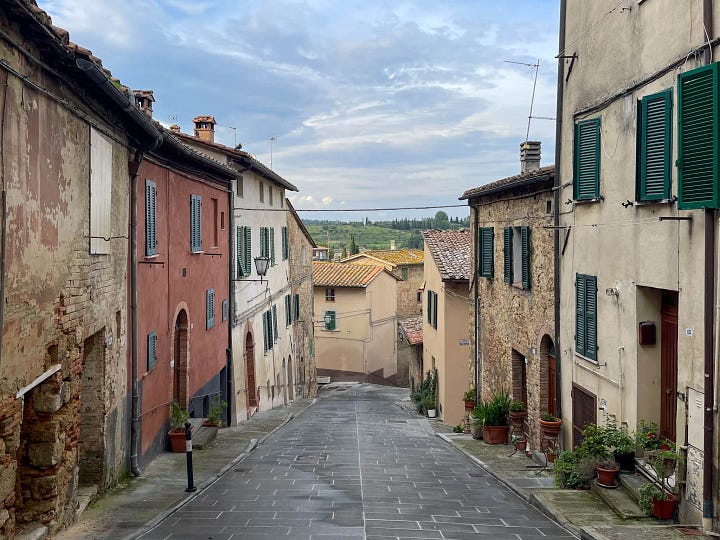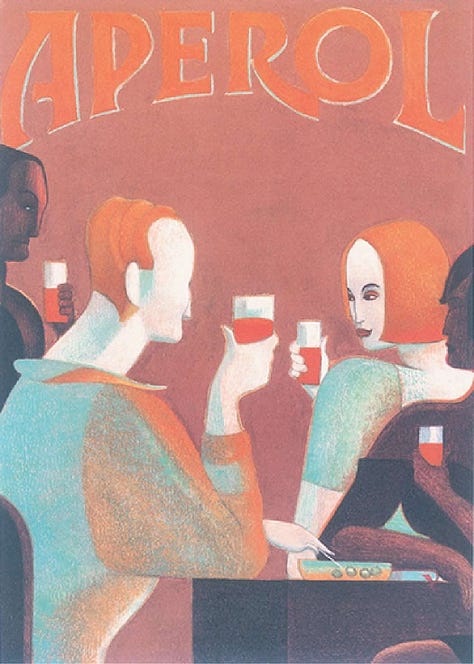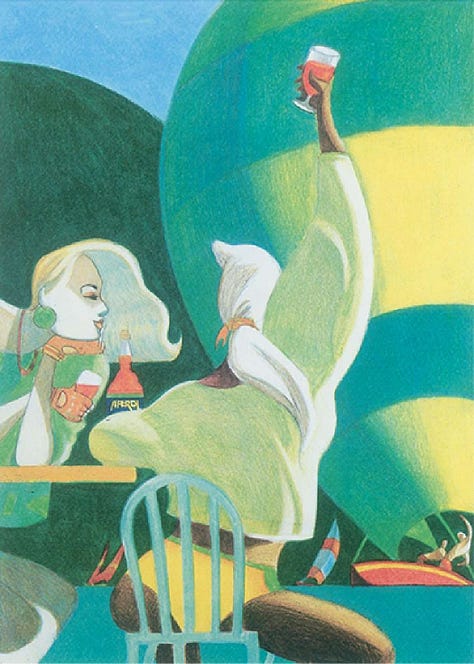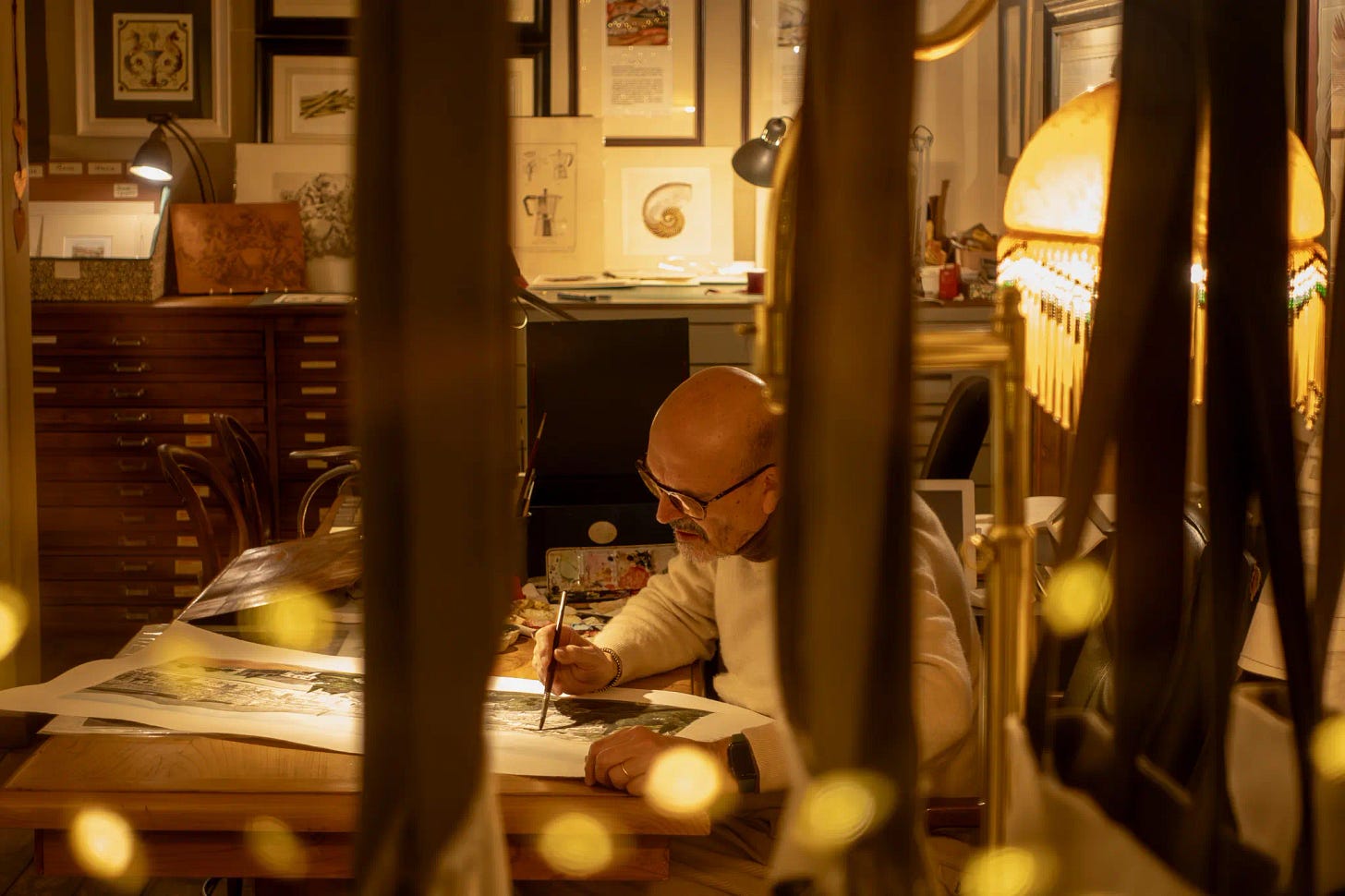Hey friends,
First thing, Substack released a new referrals feature, so I figured I'd turn it on for now and see what happens. I might tinker with the referral structure, but for now the rewards are set at:
3 referrals = 1 month free
5 referrals = 3 months free
25 referrals = 6 months free
And a reminder, paid subscribers get access to a monthly members-only email (right now, it's the Postcard series, with the next one coming out soon!), and most importantly, your support “unlocks the commons” and keeps most of the work here paywall and ad-free for other readers. I also thought about some merch but never really settled on anything...maybe some playing cards? That feels apropos for the internet watering hole.
It's the Fourth of July! This probably means there's a non-zero chance you're getting drunk off cheap beer and wondering how that high school friend you pay too much attention to on social media affords their trip to the Amalfi Coast. Surely Jessica's LuLaRoe parties can't quite foot the bill...right?
I'm writing this from Ecuador, comfortably far away from the chaos of Europe. Just reading and seeing all the photos/videos from Europe is making me second-hand angry...I hate crowds, and I hate lines. At least they aren't calling it "revenge travel" anymore; that term made me feel...icky.
It’s also surprising how fickle we are in our destinations of choice - we watch one season of the White Lotus, and suddenly, everyone must flock to Sicily. Or we still cram ourselves into Dubrovnik to soak up some good-old Game of Thrones vibes. Sure, White Lotus was a great show, but I don’t think it made me want to visit Sicily more than I already did. Plus, I’m not kidding myself; this newsletter definitely doesn’t cover a White Lotus-esque visit to the travel destination du jour.
Anyway, I just hope A.I. is getting really good at removing people from vacation photos. Though soon, it might be good enough to cut out the middleman and create the vacation photos for us.
Italy, but slower
If it isn't abundantly clear, I avoid going to Europe in the summer at all costs. Too hot. Too many people. Too expensive. I'm sure it's beautiful and all, but that's a hellscape I don't plan on enduring anytime soon. However, it’s a little more challenging to avoid the inevitable flood of European content that claims social media every year between June - August.
(Also, can we just put the phone down for a few seconds?)
But if you're hellbent on traveling to Europe this summer (or anytime), there’s a way to do it that will make your experience infinitely better - see less and slow it down.
Around 8 am, there's a honk outside. The bread man is here. Still a little too dazed from sleep to enjoy a pre-coffee human interaction, I saunter out to his small yellow cargo van. He opens the back, and it's just bread. Well, focaccia, to be exact.
I point to what looks like two square feet of freshly made focaccia. He picks it up and uses his knife to indicate a rough size. I use my hands to gesture for more. He moves the blade down two inches or so and looks at me. Don't be shy a little more. He positions the knife down the focaccia until I nod in agreement. He draws the knife down, cutting the focaccia in two, slipping my part into a brown paper bag.
After an exchange of a surprisingly small money-to-focaccia ratio, the bread man drives off, ostensibly en route to delight other Barga-dwelling residents with freshly made baked goods.
A few weeks before our stay in the small Tuscan town of Barga, we were in Cetona, a different small Tuscan town about a two-hour drive north of Rome. It's small but idyllic - around 2,700 people inhabit the ~20 square miles that make up the town. The main square, Piazza Garibaldi, is a focal point with just a handful of shops and restaurants lining the perimeter.


After walking for about two hours and realizing that we had already seen just about all of Cetona, we made like Italians and found a small wine bar with an outdoor patio.
The shop only sells Tuscan products - Pecorino Toscano (which is the best type of cheese, the proprietor will have you know), wild boar sausage, handmade pasta, and an assortment of wine. After sitting and chatting with the owner for a bit, we bought some goods and went back home to try our hand at putting together a Tuscan meal.
And that's pretty much how each of our days and nights went in Cetona. We wandered the town, picked up some locally made products, and prepared a meal at home, accompanied by excellent - and affordable - wine, usually picked with the help of a local shop owner. We found a rhythm, an enjoyment in slowing down and living in the small town that was our home for a few days.
Between our stays in Cetona and Barga, we went to a handful of the usual Tuscan suspects as well:
San Gimignano
Volterra
Montepulciano
Lucca
Florence
All of them were...fine (Florence is an exception). But those towns were also filled with headset-wearing day-trippers arriving in droves on their enormous tour buses - each of these towns can be found on a travel guide somewhere with stops in churches and museums thrown in for culture.
But the time spent in Barga and Cetona was unequivocally my favorite (daily focaccia deliveries are hard to beat). And both are noticeably absent on a Rick Steves' or Lonely Planet's Tuscany itinerary. It's true that neither has an enormous Duomo, world-class museums, or Michelin-starred restaurants. There’s nothing to see there except for life.
It's tempting, though, to go to the must-see spots. For most of us, we get what, maybe 20 vacation days a year? So the obvious inclination is to maximize the time spent after a 12-hour flight to Europe by visiting as many museums, galleries, monuments, and cathedrals as possible. It’s what you’re supposed to do.
But stop and think about what you want from your trip to Tuscany (or wherever, for that matter). Is it a checklist of museums and churches to say with absolute pride I’ve been to Tuscany? Or is it to enjoy the Tuscan way of life? A beautiful, old town steeped in history and cobblestone streets that feel lived in and peaceful. Some wine, some food, all shared over a meal that goes on way longer than the typical American is comfortable.
One of the most underrated resources when going to Italy is e-Borghi. It's an Italian website that publishes information about small villages throughout Italy. Some towns you've heard of, others you haven't. The last few times I visited Italy, e-Borghi was the first resource I looked at.
So my best advice while you're planning your next trip, perhaps this summer (if it’s not too late), is to spare a moment for the small, seemingly inconsequential town. It doesn’t have to be Cetona or Barga; find one that speaks to you. Take the time to exist there. Stay for a week. Meet some shop owners. Grab some gin, Campari, and vermouth, and make yourself an afternoon Negroni. Try your hand at cooking a big Italian dinner. If you really are determined to see more of Tuscany, hop in your Fiat and take a drive to some neighboring towns.
And if that doesn’t convince you, another reason to seek out and visit the Cetonas and Bargas of the world - they're disappearing.
This picture is from Florence, and I wasn’t sure what to do with it yet, but I kinda like it.
More from Italy
Venice is as incredible as you’d imagine, but go in late Fall or Winter when there are far fewer crowds. Two things that are unique to Venice are the bacaro and cicchetti - both staples of Venetian drinking culture.
The bacaro, a Venetian watering hole
The bacaro is an everyman’s bar, a place where you congregate with friends for a quick break at lunch or a small bite just before dinner. A place where a glass of wine and a few bites will cost you under 5 euros and 2 euros, respectively. And in some ways, the bacaro captures the rhythm of Venice – simply by looking at a bacaro, you can probably guess the time of day.
Where to Eat the Best Cicchetti in Venice, Italy
After sampling a few too many cicchetti, I noticed something interesting. Some bacari seemed to boast about their cicchetti as if a point of pride, setting them apart from the other bacari. They would explain, with enthusiasm, about where the farm they get the cheese and vegetables from is located. And, of course, it’s all seasonal.
And while you’re drinking that Aperol Spritz this summer, in Italy or at home, the drink has a pretty fun story behind it…
The History of the Aperol Spritz
As the story goes, the Austrians, being used to drinking beer and lighter styles of wine, found the wine of the Vento region to be a tad too strong. So, they would ask the bartenders to add a splash of water (“spritzen,” in German) to dilute the wine. And thus, the original Spritz Veneziano was born.
Also, some of the old Aperol ads were pretty cool…



Some other internet stuff...
Speaking of Italy, here’s an old pizza.
Twitter is more of a clusterfuck than Europe right now...
…So Meta/Facebook is attempting to capitalize and launch their own version of Twitter on Thursday. It will be called “Threads,” and the rumor mill says it will support ActivityPub, the same protocol powering apps like Mastodon. This probably doesn’t mean much to you unless you are a nerd like me, but I’m interested to see how this goes. I think long-term, I’m bullish about the next big social web being built on something like this, but I bet it’ll be a rocky journey there.
Octopus sleep is like human sleep.
Spare a moment for the humble moth.
Thanks for reading! Next week I’m getting back to some interviews and sharing a really fascinating story/conversation I had with an up-and-coming chef from San Cristobal de las Casas, Mexico.
-SR







Have you been to a place that you wouldn’t suggest slow travel?